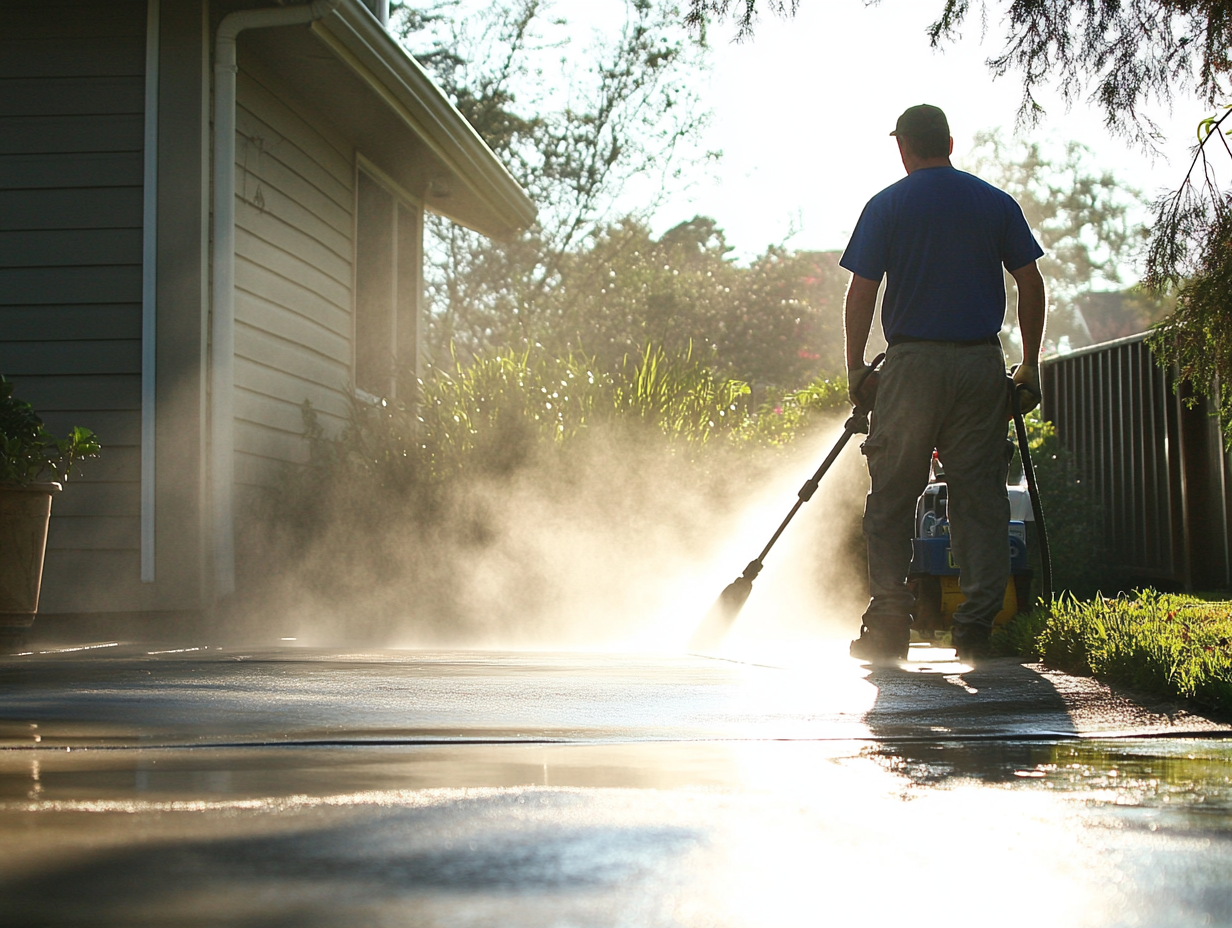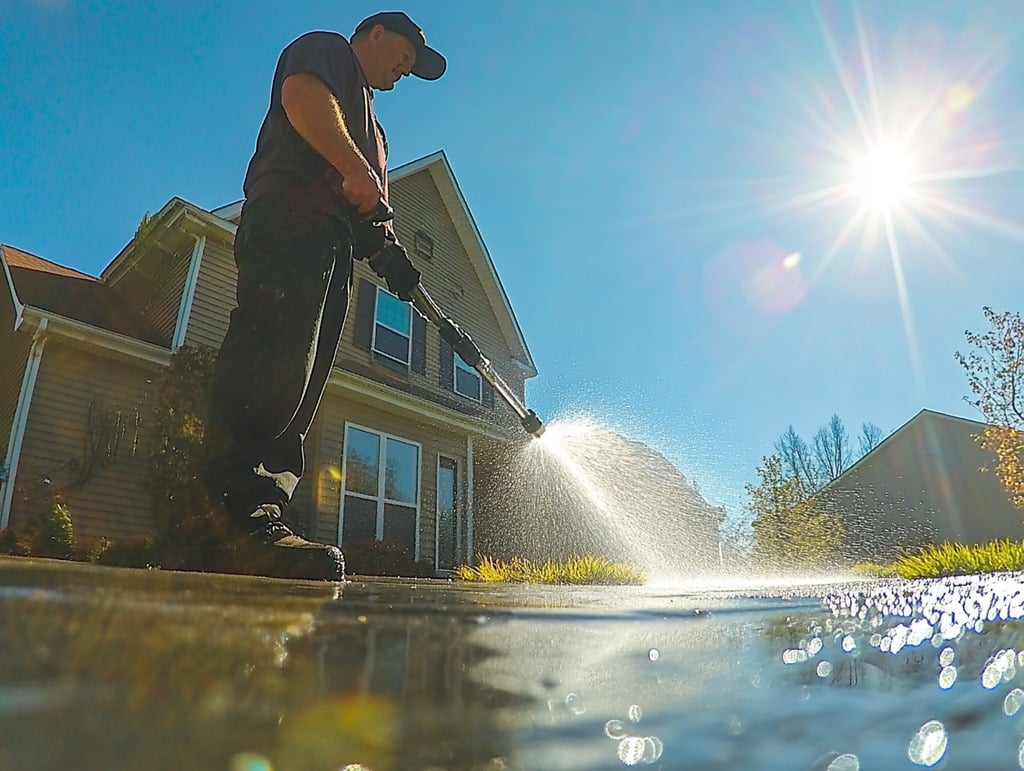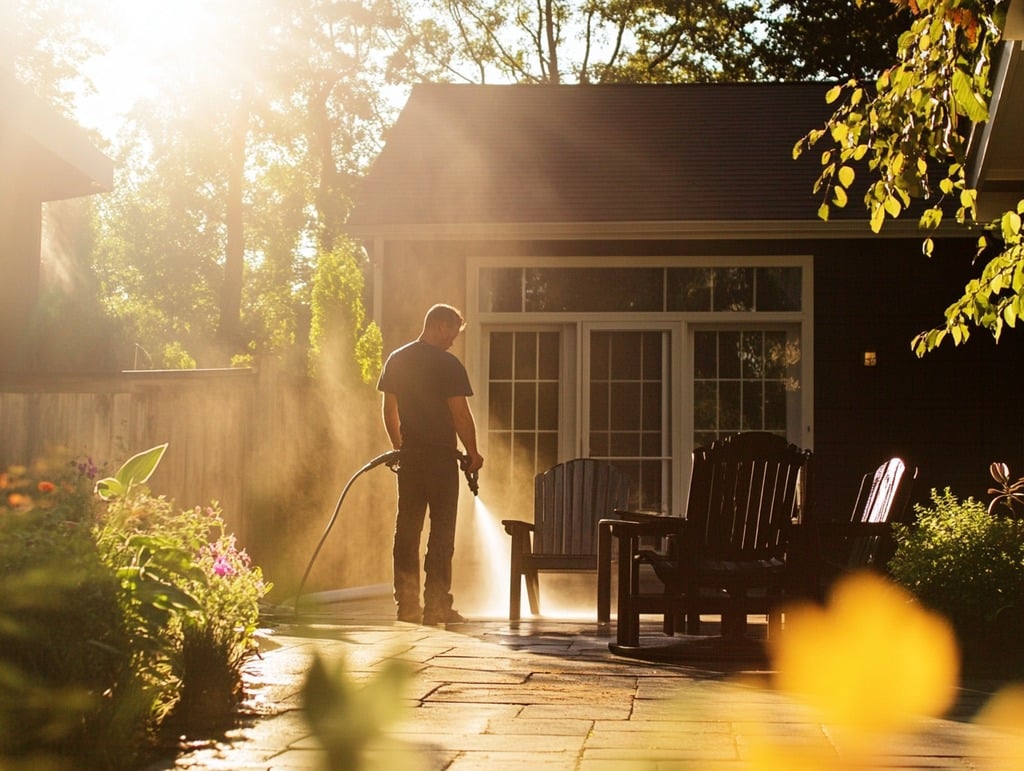Keeping the exterior of your home clean doesn’t just boost curb appeal—it’s also essential for maintaining the health of your property. Pressure washing can help you easily remove grime, mildew, and stains. However, with great power comes great responsibility. If you’re not careful, pressure washing can cause serious damage to your home’s surfaces. Here are the key do’s and don’ts of pressure washing to help you get the job done safely and effectively.
The Basics of Pressure Washing
Before we dive into specifics, let’s get one thing straight: pressure washing is not the same as simply washing something with water. The equipment delivers a high-powered spray that can be both a friend and a foe. It’s strong enough to strip paint or even etch concrete if misused, which is why understanding the essentials is so important.
Now, let’s take a look at what you should and shouldn’t do when pressure washing your home.
The Do’s of Pressure Washing
1. Do Choose the Right Equipment
Not all pressure washers are created equal. They range from light-duty (for vehicles and patio furniture) to heavy-duty (for concrete and large surfaces). If you’re planning to wash delicate surfaces, go for a lower PSI (pounds per square inch) machine. Higher PSI is great for tougher surfaces but can be risky on painted wood or siding.
Tip: If you’re unsure, renting a machine can be a smart option since rental shops often have a range of models and can help you pick the best one for your needs.
2. Do Test the Pressure on a Small, Inconspicuous Area
Even with the right PSI, surfaces react differently. Test on a hidden area before going all-in. This helps you see if the pressure is too high and avoid unwanted damage.
3. Do Keep a Safe Distance
A common mistake is placing the nozzle too close to the surface. Hold the pressure washer nozzle at least 12-18 inches from the surface. Adjust as necessary, but remember—closer isn’t always better.
4. Do Use the Correct Nozzle
Pressure washers come with various nozzles, each with a different spray angle. A 0-degree nozzle provides a powerful, direct spray, while a 40-degree nozzle offers a wider, gentler spray. Generally, wider angles are safer for home surfaces like siding and decks.
- 0-degree nozzle: Small, concentrated spray (use sparingly)
- 15-degree nozzle: For tough stains and concrete
- 25-degree nozzle: Good all-purpose option
- 40-degree nozzle: Safe for delicate surfaces like windows and siding
5. Do Wear Protective Gear
Safety first! Wear goggles, gloves, and sturdy shoes. A pressure washer can kick back debris or water with enough force to cause injury. Don’t take chances with safety.
6. Do Angle the Spray Properly
Keep the spray angled slightly downward when cleaning siding. This prevents water from getting behind the surface, where it can cause mold or damage insulation.
7. Do Use Environmentally-Friendly Detergents
When pressure washing, opt for eco-friendly detergents. Many chemicals can harm plants or enter waterways, so choose products that are labeled as biodegradable and safe for landscaping.
8. Do Clean in Sections
It’s easier to keep track of your progress if you work in small sections. Plus, this ensures that you don’t accidentally miss spots or over-clean an area.
The Don’ts of Pressure Washing
1. Don’t Use High Pressure on Delicate Surfaces
Not every surface can handle high pressure. Materials like soft wood, vinyl siding, and painted surfaces can easily be damaged. Avoid max pressure on these areas, or you’ll risk stripping paint, etching wood, or even cracking surfaces.
2. Don’t Pressure Wash Electrical Components
Pressure washers and electricity don’t mix! Avoid outlets, lights, and HVAC equipment. Even a little water exposure can cause serious electrical issues or create safety hazards.
3. Don’t Pressure Wash Windows Directly
Windows can shatter if hit with high-pressure water. Use a gentler spray from a distance, or skip the pressure washer entirely in favor of a standard hose or window-cleaning tools.
4. Don’t Use Hot Water on Painted Surfaces
If your pressure washer has a hot water option, avoid using it on painted surfaces. Hot water can make paint peel or blister, especially on wood siding. Stick to cold water unless you’re working on concrete or a non-painted surface that can handle the heat.
5. Don’t Let Water Sit on Wooden Decks
Wooden decks can get slippery when wet, and standing water can seep into cracks. After pressure washing, let the deck dry fully before putting any furniture back on it. Sealing the wood afterward can also help prevent future moisture issues.
6. Don’t Overuse Detergent
Less is often more when it comes to detergents. Too much soap can leave a residue that’s difficult to rinse off. Plus, it may be harmful to plants and animals if it gets into the soil or water systems around your home.
7. Don’t Forget to Rinse Thoroughly
If you’ve used any soap or cleaner, be sure to rinse it off completely. Leftover detergent can leave streaks or even damage surfaces over time.
Tips for Pressure Washing Specific Surfaces
Siding
- Use a wide spray angle, like 25 or 40 degrees.
- Start from the top and work your way down to avoid streaks.
- Avoid using a high PSI on vinyl or wood siding.
Decks and Patios
- Use a lower PSI to prevent splintering on wood decks.
- Test the pressure on a small area first.
- Don’t linger on any one spot for too long to avoid damage.
Driveways and Walkways
- Higher PSI is usually safe on concrete but avoid the 0-degree nozzle.
- Move in sweeping motions to prevent uneven cleaning.
- Consider sealing your driveway after washing to protect it from future stains.
Outdoor Furniture
- Use a gentle spray angle and lower pressure on plastic or wood furniture.
- Rinse thoroughly and let dry completely before use.
Fences
- For wood, keep the PSI low and use a wide spray.
- With vinyl or metal fences, you can use a slightly higher pressure, but test a small area first.
FAQs
Q: Can I pressure wash my roof?
A: It’s not recommended. Pressure washing can damage shingles and lead to water leaks. Use a low-pressure soft wash or hire a professional.
Q: How often should I pressure wash my house?
A: Once a year is usually enough for most homes, but areas prone to mildew or dirt buildup may need a touch-up every six months.
Q: Should I hire a professional for pressure washing?
A: If you’re dealing with delicate surfaces, have a multi-story home, or feel unsure about handling the equipment, a professional can be a wise investment.
Wrapping It Up
Pressure washing can be a powerful way to keep your home looking sharp, but it requires a bit of finesse. Stick to these do’s and don’ts, and you’ll be well on your way to achieving a clean, damage-free finish. Remember: the right equipment, technique, and a little patience go a long way.
Whether you’re tackling siding, decks, or driveways, following these guidelines will help you keep your home’s exterior fresh and well-maintained. So, are you ready to start pressure washing with confidence?
If you feel you’d like to leave the pressure washing up to the professionals, we’re happy to share some of our local favorites. Shoot us a message and we’ll get back to you ASAP.









